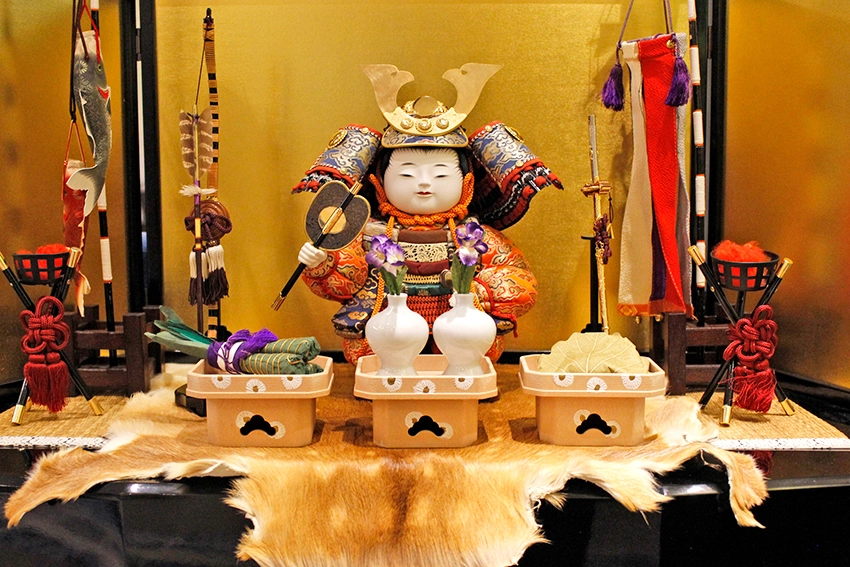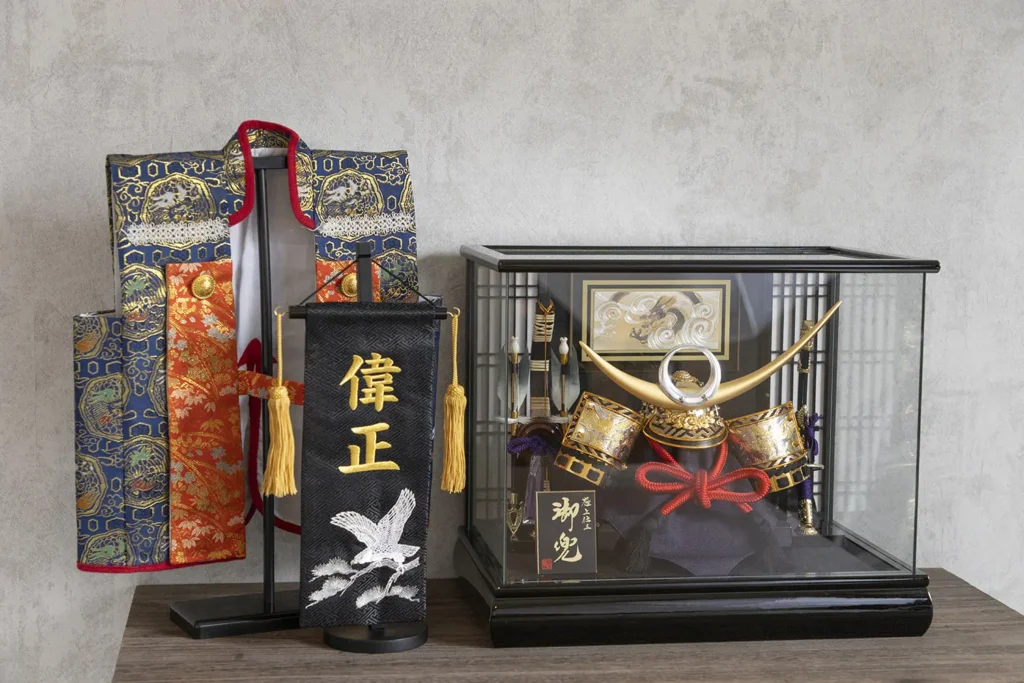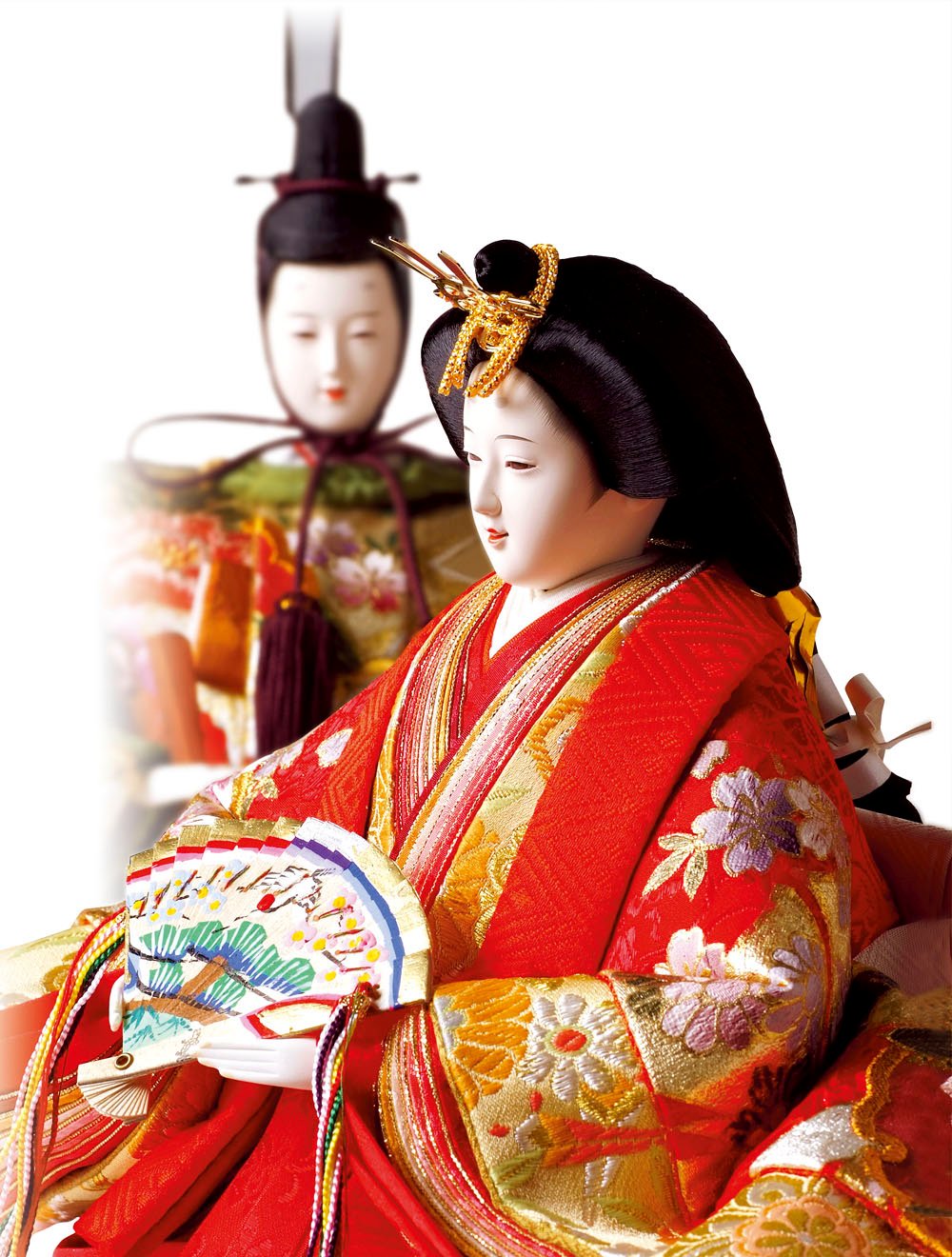Industry News, News
Celebrating Tradition: The Significance of the Gogatsu Ningyo Doll in Japanese Culture
Gogatsu ningyo dolls, also known as May dolls, are a cherished part of Japanese culture, especially during the celebration of Boys’ Day. These beautifully crafted figures symbolize strength, courage, and the hopes that families have for their sons. As we explore the significance of the gogatsu ningyo doll, we’ll uncover its historical roots, craftsmanship, cultural traditions, and how it continues to hold relevance in modern society.
Key Takeaways
- Gogatsu ningyo dolls symbolize strength and bravery, celebrating Boys’ Day in Japan.
- These dolls are crafted with great skill, often resembling samurai warriors, reflecting Japan’s rich heritage.
- The tradition of displaying gogatsu ningyo dolls is a way for families to express their hopes for their sons’ futures.
- In contemporary Japan, these dolls are not just decorations but cherished gifts that carry cultural significance.
- Efforts are being made to preserve the artistry and traditions surrounding gogatsu ningyo, ensuring they remain a vital part of Japanese culture.
Historical Roots of Gogatsu Ningyo Dolls
Gogatsu dolls, those cool warrior figures you see around Children’s Day, have a surprisingly long history. It’s not just some modern invention; they’re tied to older traditions and beliefs. Let’s take a quick look at where they came from.

Historical Roots of Gogatsu Ningyo Dolls
Origins of Japanese Dolls
Japanese dolls, or ningyo, go way back. Way, way back. Originally, they weren’t just toys. They had a job to do in religious ceremonies. Think of simple clay figures used as stand-ins or spiritual symbols. As time went on, the craftsmanship got better, and dolls started looking more detailed. These early dolls were all about keeping bad luck away and protecting people, which is still a theme with some dolls today.
- Jomon period: Clay figures show up.
- Kofun period: Worship statues influenced doll making.
- Later periods: Dolls get more detailed and symbolic.
It’s pretty interesting how the evolution of dolls in Japan mirrors changes in society, beliefs, and artistic skills. From basic religious objects to detailed artistic creations, dolls have always had a special place.
Evolution of Gogatsu Traditions
Gogatsu dolls came from older customs, specifically to celebrate boys. The samurai culture had a huge impact, with dolls showing off famous warriors and connecting the past to now. These warrior dolls weren’t just decorations; they were meant to inspire strength and bravery in young boys. Over time, the tradition became more connected with the idea of wishing boys a healthy and successful future.
Cultural Significance Through the Ages
Over the years, Gogatsu dolls have become a way to teach young boys about honor and bravery. These dolls are like little reminders of the past, keeping the samurai spirit alive. They’re a source of pride for families, showing their hopes for their sons. Displaying Gogatsu Ningyo is more than just putting up decorations; it’s a way for families to pass down values of courage and respect. These dolls remind boys of the virtues of the samurai, encouraging them to be strong and brave as they grow up.
Craftsmanship Behind Gogatsu Ningyo Dolls
Materials and Techniques Used
Okay, so when you look at a Gogatsu doll, you might not realize how much work goes into it. It’s not just some plastic toy you pick up at a store. These things are seriously handcrafted, often using techniques that have been around for generations. The materials themselves are a big deal, with artisans carefully selecting things like wood, fabric, and even the types of paints used.
Think about it: the armor has to look authentic, the faces need to have a certain expression, and everything needs to hold up over time. It’s a real art.
- Wood is often used for the base and some of the structural elements.
- Silk and other fine fabrics are essential for the clothing and armor details.
- Special paints and lacquers give the dolls their distinctive look and protect them.
The craftsmanship involved in creating Gogatsu Ningyo is a testament to the dedication and artistry of Japanese artisans. These dolls are not merely toys; they are cultural artifacts that embody the spirit and values of Japanese society.
Artisan Skills and Heritage
The artisans who make these dolls are like the unsung heroes of the whole tradition. They spend years, sometimes decades, learning the skills needed to create these intricate figures. It’s not just about following a pattern; it’s about understanding the history, the symbolism, and the cultural significance of each doll. They’re not just making dolls; they’re preserving a piece of Japanese heritage. The best Japanese craftsmanship is on display here.
Design Elements of Gogatsu Dolls
Not all Gogatsu dolls look the same, which is cool. There’s a lot of room for artistic expression, and you’ll see different styles depending on the region, the artisan, and even the specific samurai or warrior the doll is meant to represent. Some are super detailed, with intricate armor and weapons, while others have a more simplified, almost stylized look. It just depends on the artist’s vision and what they’re trying to convey. You can even find samurai armor-inspired designs.
Cultural Traditions Surrounding Gogatsu Ningyo
Integration with Kodomo no Hi
Gogatsu Ningyo are a big deal during Kodomo no Hi, or Children’s Day, on May 5th. It’s part of Golden Week, a bunch of holidays all strung together. Originally, this day was specifically for boys, and that’s where the Gogatsu Ningyo tradition comes in. Families display these dolls, hoping to inspire their sons to be strong and brave, like the samurai they represent. It’s a way of wishing them a healthy and successful future.
Role of Families in Celebrating
Families play a huge role in keeping the Gogatsu Ningyo tradition alive. It’s not just about buying the dolls; it’s about the whole experience. Setting up the display together, telling stories about the figures, and explaining what they symbolize – it all becomes a family affair. It’s a way to connect with their heritage and pass down important values to the next generation. Plus, it’s a good excuse to spend some quality time together.
Symbolism of Strength and Bravery
The symbolism behind Gogatsu Ningyo is pretty straightforward: strength and bravery. These dolls are modeled after famous warriors and legendary figures, all known for their courage and skill. By displaying them, families are hoping to instill those same qualities in their sons. It’s like saying, “Hey, look at these awesome guys. Be like them!” The samurai dolls serve as a constant reminder of the virtues associated with the samurai, encouraging boys to embody these qualities as they grow into adulthood.
It’s interesting how these dolls are more than just decorations. They’re like little history lessons, reminding everyone of the stories and values that are important in Japanese culture.
Gogatsu Ningyo in Contemporary Society
Gogatsu dolls, while having roots in tradition, are still changing and finding new meaning in today’s Japan. They aren’t just old things; they’re symbols that keep up with the times.
Modern Interpretations of Gogatsu Dolls
Tradition is great, but some artists are giving Gogatsu Ningyo a modern twist. You still see the classic warrior figures, but sometimes they’re made with new stuff or have a more modern look. It’s a way of keeping the tradition alive while also making it relevant today.
Here’s what’s changing:
- Using modern materials like plastics and new fabrics.
- Making designs simpler for smaller homes.
- Working with artists today to create unique pieces.
Influence of Globalization
Gogatsu Ningyo, those cool warrior dolls, have made their way out of Japan and into homes all over the world. You can find them in Japanese communities, sure, but also in places where people just like the art and what it means. It’s not just about the dolls themselves either; it’s about sharing a piece of Japanese culture.
It’s interesting to see how these dolls, originally meant for a specific cultural context, can find new meaning and appreciation in different parts of the world. It shows how objects can become ambassadors of culture, sparking curiosity and understanding across borders.
Preservation of Traditional Craftsmanship
So, how do we keep these amazing traditions alive? It’s not always easy, but some cool things are happening. Museums often put on exhibits showcasing historical Gogatsu Ningyo, giving people a chance to see the craftsmanship up close. There are also workshops where artisans teach the next generation how to make the dolls. It’s a hands-on way to keep the skills going. Plus, some families are dedicated to passing down their dolls and stories, which is super important.
Artistic Expressions in Gogatsu Ningyo
Design Aesthetics and Symbolism
Gogatsu Ningyo aren’t just decorations; they’re tiny art pieces. The design is super detailed, from the armor scales to the faces. It’s all about showing strength and dignity. The craftsmanship blends historical accuracy with artistic license.

The artistry of each artisan behind each gogatsu doll product at Fujiki Craft
Cultural Exchange through Art
Gogatsu Ningyo are more than just decorations; they start conversations. They help people talk about Japanese history, samurai culture, and the values of strength and courage. That’s why they’re part of cultural exchange programs and museum exhibits. It’s a way to connect with a culture that might seem different. Plus, who doesn’t like a cool doll with a sword? These ornamental dolls are a tangible way to learn about another culture.
It’s interesting how these dolls, originally meant for a specific cultural context, can find new meaning and appreciation in different parts of the world. It shows how objects can become ambassadors of culture, sparking curiosity and understanding across borders.
Impact on Modern Art Forms
Gogatsu Ningyo has even influenced modern art. Artists take inspiration from the dolls’ designs, materials, and the ideas they represent. You might see elements of samurai armor or traditional Japanese aesthetics in contemporary sculptures or paintings. It’s a way of connecting the past with the present.
Here’s how they’ve made an impact:
- Inspiration for character design in anime and manga.
- Influence on contemporary sculpture and installation art.
- Use of traditional materials in modern art pieces.
Gogatsu Ningyo and Japanese Festivals
Gogatsu Ningyo, those awesome May Dolls, really shine during Japanese festivals, especially Kodomo no Hi (Children’s Day) on May 5th. It’s part of Golden Week, and while it used to be just for boys (called Tango-no-sekku back then), now it’s for all kids. It’s a time for families and communities to come together and celebrate the health and happiness of children.
Celebration of Boys’ Day
Boys’ Day, or Kodomo no Hi, is a big deal. Families display Gogatsu Ningyo to wish their sons strength and success. It’s not just about the dolls, though. You’ll see koinobori (carp streamers) flying high, symbolizing courage and perseverance. People eat kashiwa mochi (rice cakes filled with red bean paste and wrapped in oak leaves) and chimaki (rice dumplings wrapped in bamboo leaves). These traditions are all about celebrating boys and their future.

Celebration of Boys’ Day
Community Involvement in Festivals
It’s cool to see how communities get involved in Children’s Day. Local festivals often have special events, like parades, games, and performances. Sometimes, museums put on exhibits showing off historical Gogatsu Dolls, giving everyone a chance to see the craftsmanship up close. These events aren’t just fun; they’re a way to teach kids about their culture and history. Plus, many families visit these events together, making it a fun day out for everyone.
It’s interesting how these dolls are more than just decorations. They’re like little history lessons, reminding everyone of the stories and values that are important in Japanese culture.
Significance of Displaying Gogatsu Dolls
Displaying Gogatsu Ningyo is more than just decoration; it’s a way to wish boys good health, strength, and a bright future. The dolls, often dressed in armor and helmets, represent famous warriors and legendary figures. They’re a symbol of courage and protection. Families carefully arrange the dolls, creating a display that’s both beautiful and meaningful. It’s a tradition that connects generations and reinforces important values.
Global Influence of Gogatsu Ningyo
Export of Gogatsu Dolls
Gogatsu Ningyo, those awesome warrior dolls, have journeyed beyond Japan, finding homes across the globe. Sure, you’ll spot them in Japanese communities, but also in places where folks simply appreciate the artistry and what they stand for. It’s not just about the dolls; it’s about sharing a piece of Japanese culture. I remember seeing a small Gogatsu Ningyo display in a museum once, and it was pretty cool to see something so specific being appreciated by people from all walks of life.
International Recognition of Boys’ Day
Boys’ Day, or Kodomo no Hi, isn’t just a Japanese thing anymore. It’s slowly getting recognized in other countries, too. Sometimes it’s celebrated by Japanese people living abroad, but other times it’s picked up by schools or community groups wanting to teach kids about different cultures. It’s cool how a holiday centered around children’s well-being can travel across borders and still mean something to people, even if they don’t have the same traditions.
Cultural Exchange through Gogatsu Ningyo
Gogatsu Ningyo are more than just decorations; they’re conversation starters. They open the door to talking about Japanese history, samurai culture, and the values of strength and courage. I think that’s why they’ve become a part of cultural exchange programs and museum exhibits. It’s a tangible way to connect with a culture that might seem different at first glance. Plus, who doesn’t love a cool-looking doll with a sword?
It’s interesting to see how these dolls, originally meant for a specific cultural context, can find new meaning and appreciation in different parts of the world. It shows how objects can become ambassadors of culture, sparking curiosity and understanding across borders.
Gogatsu Ningyo, or Boys’ Day dolls, have a special place in Japanese culture and are celebrated around the world. These dolls symbolize strength and courage, and they inspire many people to appreciate Japanese traditions. If you want to learn more about these beautiful dolls and their impact globally, visit our website for more information and unique products!
Final Thoughts on Gogatsu Ningyo Dolls
In wrapping up, Gogatsu Ningyo dolls are much more than just decorative items; they embody a rich tapestry of Japanese culture and tradition. Celebrated during Boys’ Day, these dolls symbolize the strength and aspirations parents hold for their sons. They serve as a bridge connecting generations, reminding families of the noble samurai spirit. As we reflect on these customs, we see how they shape the identity and values of Japanese society. Whether displayed in homes or cherished as gifts, Gogatsu dolls play a crucial role in preserving cultural heritage, showing us that even in our modern lives, the stories and beliefs of the past continue to resonate.
Read more: Discover the Best Japanese Craft Supplies for Your Next Creative Project





